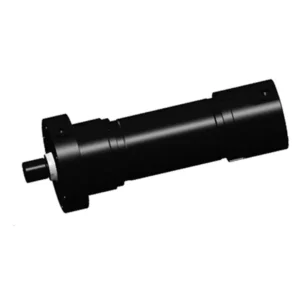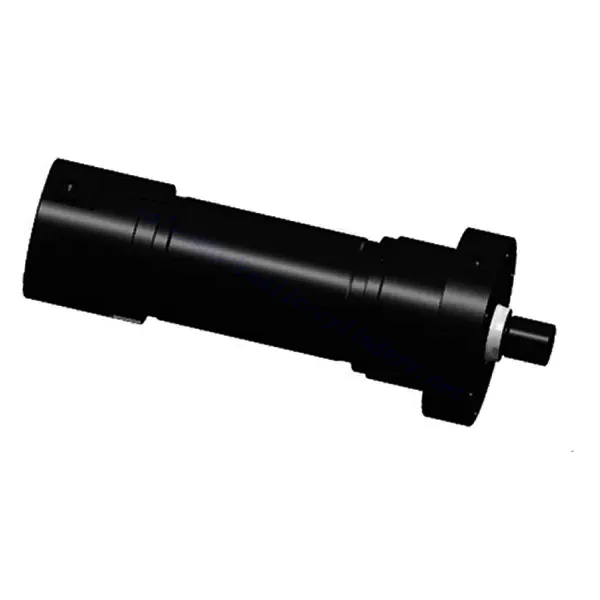Injection Molding Machine Ejection Cylinder
Como um dos fabricantes, fornecedores e exportadores de produtos mecânicos de cilindros hidráulicos, oferecemos cilindros hidráulicos e muitos outros produtos.
Entre em contato conosco para obter detalhes.
Correio eletrônico:sales@hydraulic-cylinders.net
Fabricante, fornecedor e exportador de cilindros hidráulicos.
Injection Molding Machine Ejection Cylinder

The injection molding machine ejection cylinder is a vital component in the plastic injection molding process, designed to improve efficiency and precision by facilitating the ejection of molded parts from the mold cavity. This specialized cylinder plays a crucial role in the final stage of the injection molding cycle, ensuring the smooth and efficient removal of molded parts from the mold.
The injection molding machine ejection cylinder is an essential component in plastic injection molding, enabling efficient and precise ejection of molded parts from the mold cavity. This cylinder ensures reliable and optimized ejection processes with its robust construction, precise ejection control, fast operation, and adjustable stroke length. By following the recommended usage methods and maintenance practices, manufacturers can maximize the performance and longevity of the injection molding machine ejection cylinder, ultimately improving the efficiency, precision, and overall quality of plastic injection molding operations.
Injection Molding Machine Ejection Cylinder Key Characteristics:
- Robust Construction:
- The injection molding machine ejection cylinder is built with high-quality materials, ensuring durability and longevity even in demanding production environments.
- It is designed to withstand high ejection forces and repetitive movements, maintaining consistent performance over extended periods of use.
- Precise Ejection Control:
- This cylinder provides precise control over the ejection process, allowing for accurate and repeatable ejection of molded parts.
- It enables customization of ejection speed, force, and stroke length, ensuring optimal part removal without causing damage.
- Fast and Efficient Operation:
- The injection molding machine ejection cylinder facilitates rapid ejection cycles, minimizing production time and increasing overall productivity.
- It ensures swift and reliable ejection of molded parts, reducing downtime and enabling faster mold cycling.
- Adjustable Stroke Length:
- This cylinder offers adjustable stroke length to accommodate mold designs and part sizes.
- It allows for flexibility in ejection, ensuring that parts are ejected with the appropriate distance and clearance from the mold.
Injection Molding Machine Ejection Cylinder Parameter:
| Product Name | Injection Molding Machine Ejection Cylinder |
| Features: | Eject the product formed in the mold |
| Bore diameter: | 90mm~220mm |
| Rod diameter: | 50mm~140mm Stroke≤600mm |
| Thrust force: | Maximum 760KN (Bore diameter: 220mm/pressure10MPa) |
| Applications: | Injection Molding Machine |
Rod diameter: 50mm~140mm
Stroke≤600mm
(Bore diameter: 220mm/pressure10MPa)
Cement Equipment Cylinder Factory:

Usage Method Of Injection Molding Machine Ejection Cylinder:
- Installation:
- Follow the manufacturer’s guidelines to install the injection molding machine ejection cylinder securely onto the injection molding machine.
- Ensure proper alignment and attachment to the machine’s ejection unit, allowing smooth operation during the ejection process.
- Adjusting Ejection Parameters:
- Utilize the machine’s control panel or interface to adjust ejection parameters, such as speed, force, and stroke length.
- Refer to the machine’s operating manual for specific guidelines on setting the appropriate parameters based on the part specifications and mold requirements.
- Mold Preparation:
- Set up the mold in the injection molding machine, ensuring proper alignment and clamping.
- Attach the ejection components, such as ejector pins or ejector plates, to the mold, ensuring secure and reliable ejection.
- Ejection Process:
- Initiate the ejection process by activating the injection molding machine.
- The injection molding machine ejection cylinder swiftly extends the ejection components, pushing the molded parts out of the mold cavity.
- Ensure that the ejection stroke length is adjusted to eject the parts with the desired clearance and without causing any damage.
How Hydraulic Cylinder Works?
A hydraulic cylinder is a mechanical device that uses hydraulic fluid to generate force and facilitate linear motion. It operates by transmitting pressure through an enclosed fluid to produce mechanical output. Here’s a simplified explanation of how a hydraulic cylinder works:
- Basic Components:
- Cylinder Barrel: The main body of the hydraulic cylinder houses the piston and other internal components.
- Piston: A cylindrical component that divides the cylinder barrel into two chambers.
- Piston Rod: Connected to the piston, it extends outside the cylinder barrel and transmits the generated force.
- Seals prevent hydraulic fluid leakage between the piston and cylinder barrel, ensuring efficient operation.
- Hydraulic System:
- The hydraulic system comprises a pump, control valves, hydraulic fluid (typically oil), and connecting pipes.
- The hydraulic pump pressurizes the fluid, creating hydraulic energy that can be used to generate force.
- Two Chambers:
- The hydraulic cylinder has two chambers: the rod side (or pressure side) and the opposite side (or return side).
- The rod side is connected to the hydraulic pump, while the opposite is connected to a reservoir or return line.
- Operation:
- When pumped into the rod side chamber, the hydraulic fluid applies pressure on the piston, causing it to move outward.
- As the piston moves, it pushes the rod, generating linear force.
- Simultaneously, the hydraulic fluid from the opposite side chamber returns to the reservoir or through the return line.
- Directional Control:
- The direction of movement of the hydraulic cylinder is controlled using directional control valves.
- These valves regulate the flow of hydraulic fluid to the appropriate chamber, determining the direction of piston movement.
- Force and Speed Control:
- The force generated by the hydraulic cylinder depends on the hydraulic pressure and the effective area of the piston.
- By adjusting the hydraulic pressure, the force output can be controlled.
- The speed of the cylinder’s movement can be regulated by adjusting the flow rate of hydraulic fluid into or out of the cylinder.
- Applications:
- Hydraulic cylinders are used in various applications that require linear force and motion, such as construction equipment, material handling machinery, manufacturing systems, and vehicles.
- They are commonly used in lifting, pushing, pulling, bending, and positioning applications.
Aptidão e capacidade da fábrica:
(1) Montagem
Temos uma plataforma de montagem de pesquisa e desenvolvimento independente de primeira classe. A oficina de produção de cilindros hidráulicos tem quatro linhas de montagem semiautomáticas de cilindros de elevação e uma linha de montagem automática de cilindros de inclinação, com uma capacidade de produção anual projetada de 1 milhão de peças. A oficina de cilindros especiais é equipada com várias especificações de um sistema de montagem de limpeza semiautomática com uma capacidade de produção anual projetada de 200.000 peças e equipada com famosos equipamentos de usinagem CNC, um centro de usinagem, um equipamento especial de processamento de cilindros de alta precisão, uma máquina de solda robotizada, uma máquina de limpeza automática, uma máquina de montagem automática de cilindros e uma linha de produção de pintura automática. O equipamento crítico existente é de mais de 300 conjuntos (conjuntos). A alocação ideal e o uso eficiente dos recursos do equipamento garantem os requisitos de precisão dos produtos e atendem às necessidades de alta qualidade dos produtos.


(2) Usinagem
A oficina de usinagem é equipada com um centro de torneamento de trilho inclinado personalizado, um centro de usinagem, uma máquina de brunimento de alta velocidade, um robô de soldagem e outros equipamentos relacionados, que podem lidar com o processamento de tubos de cilindros com diâmetro interno máximo de 400 mm e comprimento máximo de 6 metros.

(3) Soldagem

(4) Pintura e revestimento
Com linhas de revestimento de tinta à base de água automáticas de cilindros de pequeno e médio porte, para obter carregamento e descarregamento automáticos de robôs e pulverização automática, a capacidade projetada é de 4.000 peças por turno;
Também temos uma linha de produção de tinta semiautomática para cilindros grandes, acionada por uma corrente elétrica, com capacidade de projeto de 60 caixas por turno.


(5) Testes
Temos instalações de inspeção e bancos de teste de primeira classe para garantir que o desempenho do cilindro atenda aos requisitos.

We are one of the best hydraulic cylinder manufacturers. We can offer comprehensive hydraulic cylinders. We also provide corresponding caixas de câmbio agrícolas. Exportamos nossos produtos para clientes em todo o mundo e conquistamos uma boa reputação devido à qualidade superior de nossos produtos e ao serviço pós-venda. Convidamos clientes nacionais e estrangeiros a entrar em contato conosco para negociar negócios, trocar informações e cooperar conosco!
Faça um tour pela nossa fábrica de RV:
Faça um tour pela nossa fábrica de RV com o seguinte
Cilindro hidráulico Aplicação:


